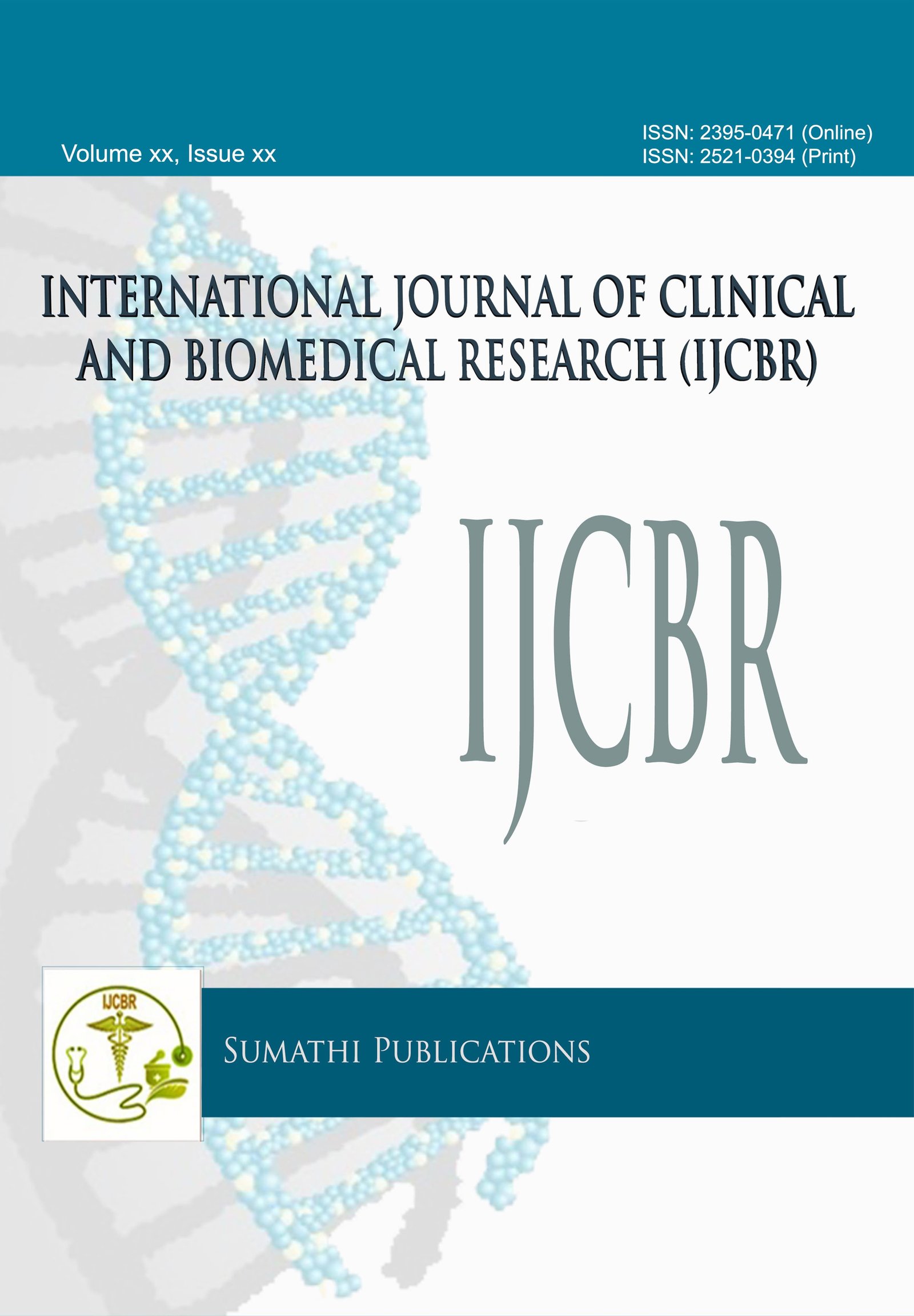A COMPARATIVE STUDY OF TOPICAL BETAXALOL AND TIMOLOL FOR THEIR EFFICACY AND SIDE EFFECTS
DOI:
https://doi.org/10.31878/ijcbr.2018.43.02Abstract
Purpose: Primary open angle glaucoma (POAG) is one such field in Ophthalmology where ophthalmologists have failed to stop blindness due to it. All the available treatment modalities are directed towards the reduction of intraocular pressure (IOP) but without interfering the basic aetiopathogenesis. In this study we propose to study efficacy, potency and adverse effects of topical Timolol and Betaxalol in primary open angle glaucoma. Methodology: A comparative study of topical Betaxalol 0.5% and Timolol 0.5% in the management of POAG was conducted at Tertiary care hospital. Fifty patients of newly diagnosed POAG of different age, sex, religion from both urban and rural population attending eye OPD were included in this study. 25 patients were treated with topical Timolol maleate 0.5% ophthalmic solution BD and 25 patients were treated with topical 0.5% Betaxalol hydrochloride phthalmic solution BD. At 20 weeks follow up IOP levels n both the groups measured by applanation tonometer were compare to each other. Results: In this study a total of 50 patients with POAG were studied. 25 patients were treated with Timolol maleate 0.5% ophthalmic solution and 25 patients were treated with 0.5% Betaxalol hydrochloride ophthalmic solution. Out of 50 patients, 29 (58%) were male and 21(42%) were female patients. POAG was most common in the age group of 51-60 years with average age 51.50 (S.D. 9.8) years. Average age in males was 54.50 years, while in female it was 49.31 years. Conclusion: both Timolol and Betaxalol are effective in decreasing IOP in POAG patients. The magnitude of Timolol in decreasing IOP is more as compared to Betaxalol. The selective beta 1 adrenergic inhibition of Betaxalol provides an added benefit for those patients in whom beta 2 blockade could be harmful.
Downloads
Downloads
Published
Issue
Section
License
The journal allows the author(s) to hold the copyright without restrictions and will retain publishing rights without restrictions.
The submitted papers are assumed to contain no proprietary material unprotected by patent or patent application; responsibility for technical content and for protection of proprietary material rests solely with the author(s) and their organizations and is not the responsibility of the journal. The main (first/corresponding) author is responsible for ensuring that the article has been seen and approved by all the other authors. It is the responsibility of the author to obtain all necessary copyright release permissions for the use of any copyrighted materials in the manuscript prior to the submission.
What are my rights as an author?
It is important to check the policy for the journal to which you are submitting or publishing to establish your rights as
Author. Journal's standard policies allow the following re-use rights:
- The journal allows the author(s) to hold the copyright without restrictions.
- The journal allows the author(s) to obtain publishing rights without restrictions.
- You may do whatever you wish with the version of the article you submitted to the journal.
- Once the article has been accepted for publication, you may post the accepted version of the article on your own personal website, your department's website or the repository of your institution without any restrictions.
- You may not post the accepted version of the article in any repository other than those listed above (i.e. you may not deposit in the repository of another institution or a subject-matter repository) until 12 months after publication of the article in the journal.
- You may use the published article for your own teaching needs or to supply on an individual basis to research colleagues, provided that such supply is not for commercial purposes.









